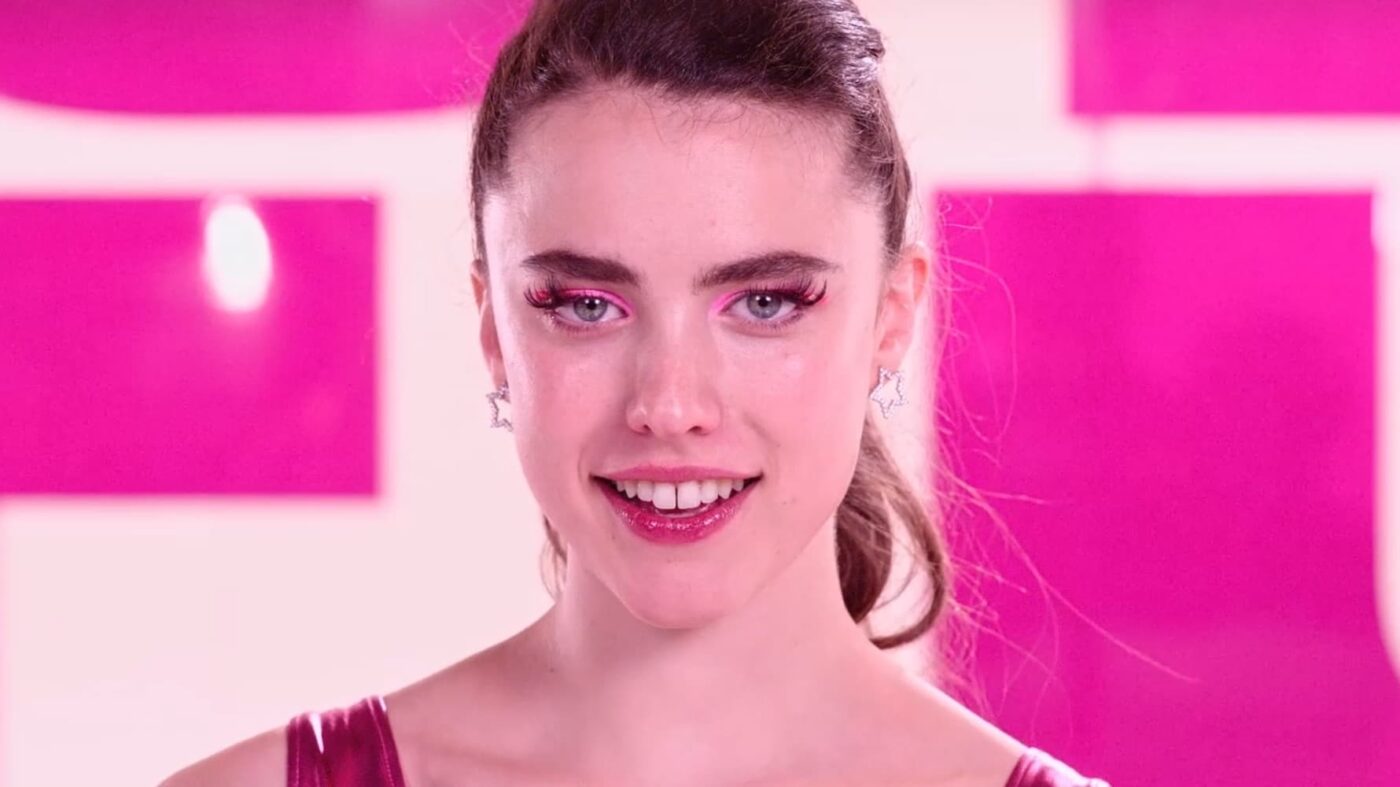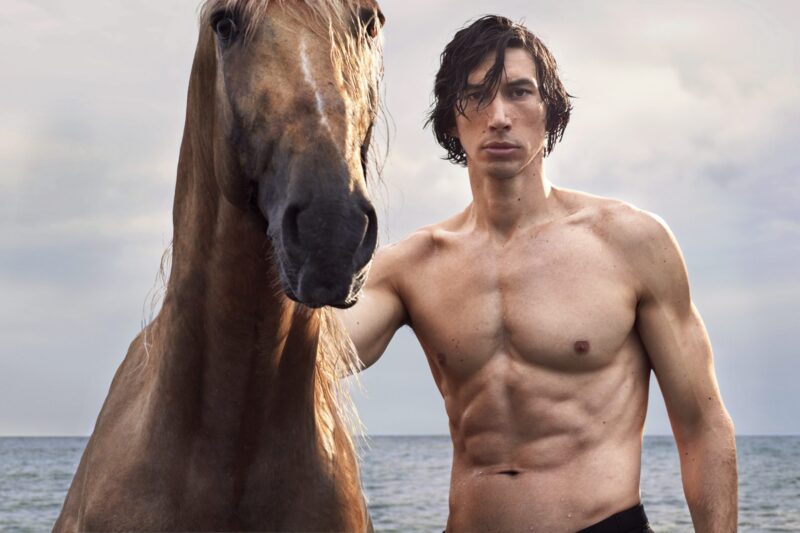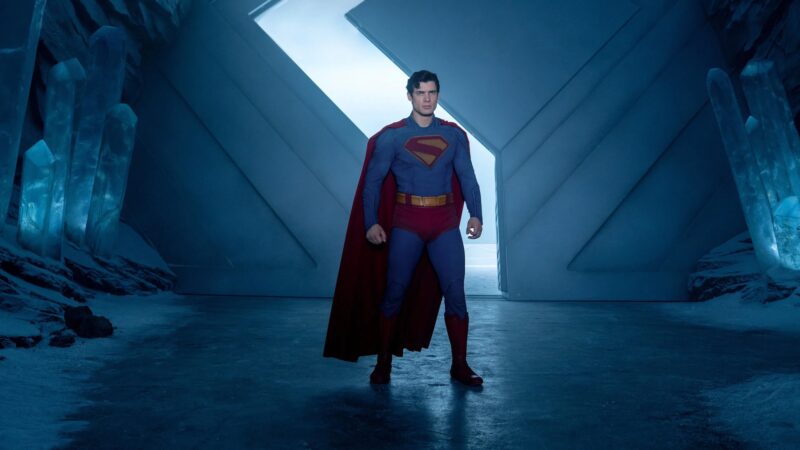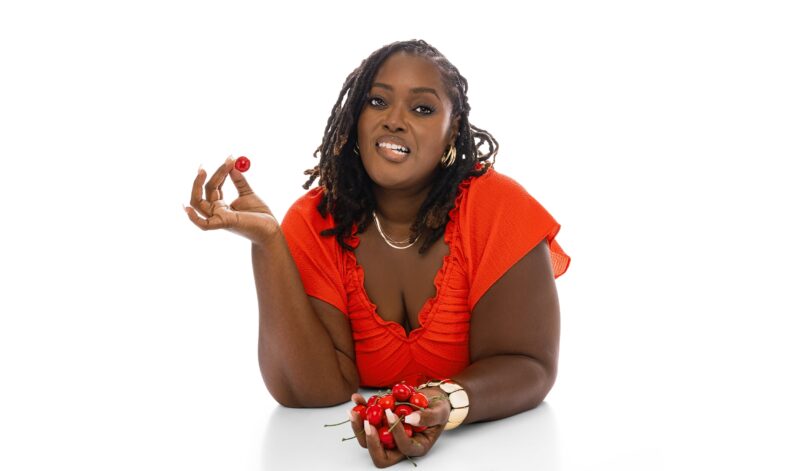A star is being built on the Hollywood Walk of Fame for Elisabeth Sparkle (nomen omen). Next, the Oscar winner is honored at the inauguration. But as time goes by, cracks begin to show, the terrazzo-and-brass star on the sidewalk gets ignored, stepped on and finally splattered with ketchup (foreshadowing the gory finale). In one top-down shot –with multiple dissolves– director Coralie Fargeat introduces the protagonist, the setting and the premise of The Substance (aging and fleeting fame/beauty), while telegraphing its aesthetics. The unusual camera angle and its unsettling perspective recur throughout the movie (Elisabeth in the shower); so does the symmetrical –or the asymmetrical– composition of the shots.
A consummate storyteller, Fargeat organizes The Substance in three chapters. In “Elisabeth,” the actress (Golden Globe winner Demi Moore) is fired from her aerobics TV show. It’s her 50th birthday and the producer (Dennis Quaid as Harvey) argues: “I have to give people what they want… and people always ask for something new. Renewal is inevitable (…) When you’re fifty, it stops.” The scene alternates between extreme close-ups (Quaid’s mouth, the shrimps he’s eating, a fly on his neck) and the fish-eye lens distorting his face. The sound is cranked up, the visual statement bold, the tone grotesque: much like the symmetry/asymmetry, the alternation of extreme close-ups and extreme wide shots is the very fabric of The Substance. Everything is in your face here, everything’s exaggerated and densely symbolic: sound, colors, characters, production design, visual effects.

‘The Substance’ • Photo: MUBI.
After a car crash, Elisabeth finds out about an illegal “Substance:” “Have you ever dreamt of a better version of yourself? Younger. More beautiful. More perfect. One single injection unlocks your DNA, starting a new cellular division that will release a new version of yourself (…) You are the matrix, everything comes from you and everything is you (…) You just have to share: one week for one and one week for the other. A perfect balance of 7 days each. The one and only thing not to forget: you are ONE, you can’t escape from yourself.”
Elisabeth takes her chance and injects herself with the serum: the “new version” (Sue) emerges from her back in a scene that pays tributes to Alien, Invasion of the Body Snatchers and 2001: A Space Odyssey (the Stargate sequence). No doubt The Substance is a postmodern tapestry of nods and homages and archetypes: from the myth of Faust (via The Picture of Dorian Gray and Dr Jekyll and Mr Hyde) to fairy tales like Cinderella and Beauty and the Beast, to literary echoes (The Metamorphosis), to Kubrick’s The Shining, cited in the prologue with the red hallway and then again (verbatim) in the third chapter, along with Carpenter (The Thing and They Live), Cameron (Avatar), Dante (Gremlins), De Palma (Carrie), Hitchcock (Vertigo), Lynch (The Elephant Man)…
Fargeat lingers here on the naked bodies: 50-year-old Elisabeth’s wrinkles and the 20-year-old’s supple body Sue (Margaret Qualley) explores in the mirror. “Too bad her boobs aren’t in the middle of her face instead of that nose,” say two casting directors at the auditions for the Elisabeth Sparkle replacement. But not Sue: “looks like everything sure is in the right place this time.” Is it?
Chapter 2 is titled after Sue. Her lycra leotard is fuchsia; her billboard is pink; her eye shadow is pink, the set of her new “Pump It Up” show is pink; the decoupage is all extreme close ups of body parts: eyes, red lips, firm buttocks, shimmering fitness wear… All of a sudden, we’re in pink-hued Barbie Land and we can’t help but compare Gerwig’s blockbuster (2023) with Fargeat’s (2024). Both offer a female perspective on women’s bodies, both tackle misogyny and unrealistic beauty standards, both are obsessed with Kubrick’s 2001: A Space Odyssey and the “Also Spracht Zarathustra” track. But Fargeat’s satire takes on the form of body horror, while also lambasting ageism, showbiz and celebrity culture.
The 7-day balance between the matrix and the “other self” soon goes awry: Sue begins “stealing more and more time” from Elisabeth, who finds herself with a deformed finger first, then as an old woman (another wink at The Shining), finally a creepy “Gollum.” A decay progressively mirrored by the trashing of Elisabeth’s own space (the apartment).
Chapter 3: “Monstro Elisasue.” After killing Elisabeth, Sue attempts to recreate another version of herself, but the result is a repulsive monster with Elisabeth’s face and arm on the back, Sue’s eyes, boobs, mouth in front, all in the wrong place (remember the audition in chapter 1? The tantalizing body parts in chapter 2?) We’re now in splatter film territory. Everything’s gone over the top and so have the film quotes: the bloodbath from Carrie, the hallway from The Shining, the “monstro” from The Thing and The Blob. But chapter 3 must be read in the context of the previous two. As the flip side of Harvey’s chauvinism and business philosophy (“we need her young, we need her hot… Pretty girls should always smile”). As the inevitable consequence of trying to escape from oneself. What’s more horrific? The “monstro” in chapter 3 or Elisabeth’s despair in chapter 2? Still beautiful, but unable to see herself as such, 50-year-old Elisabeth gets ready for a date: she applies more make-up, she adjusts her hair again and again. Nothing’s good enough in her eyes, nothing compares to Sue’s radiant youth: aging is not for the faint of heart.
The Substance is streaming on MUBI.






